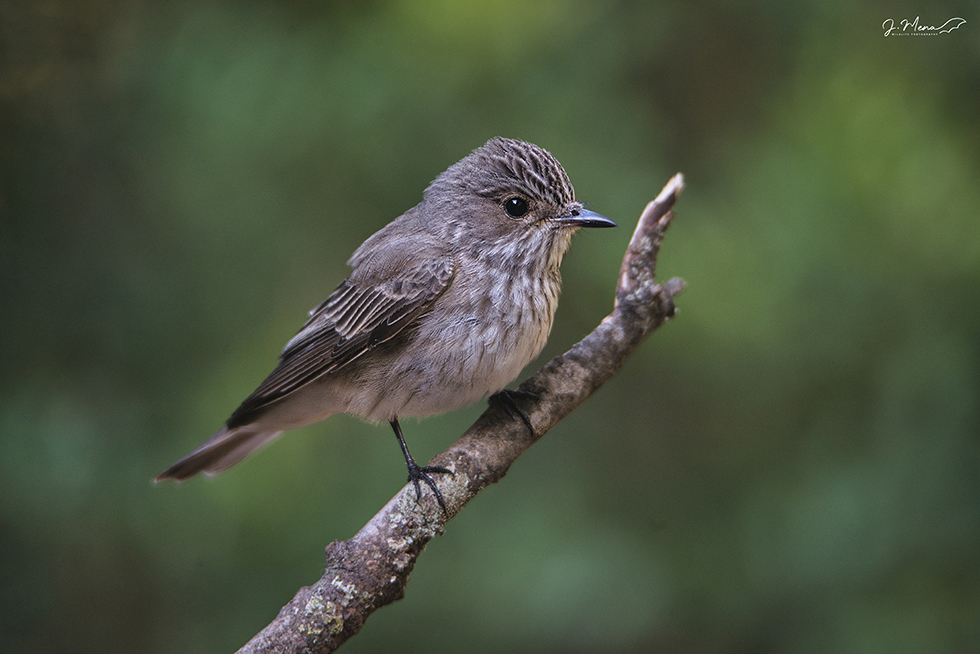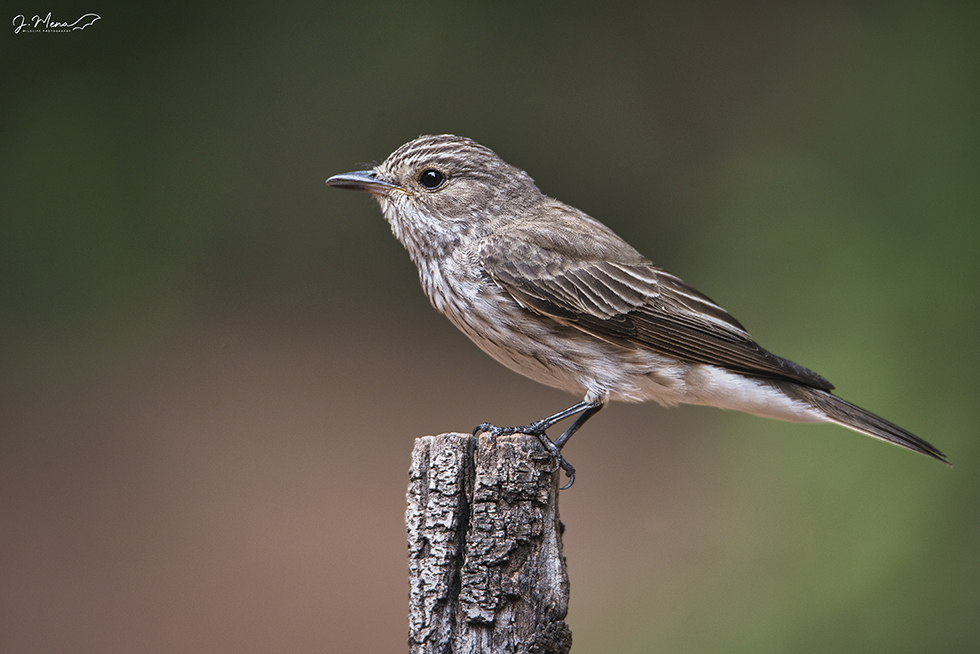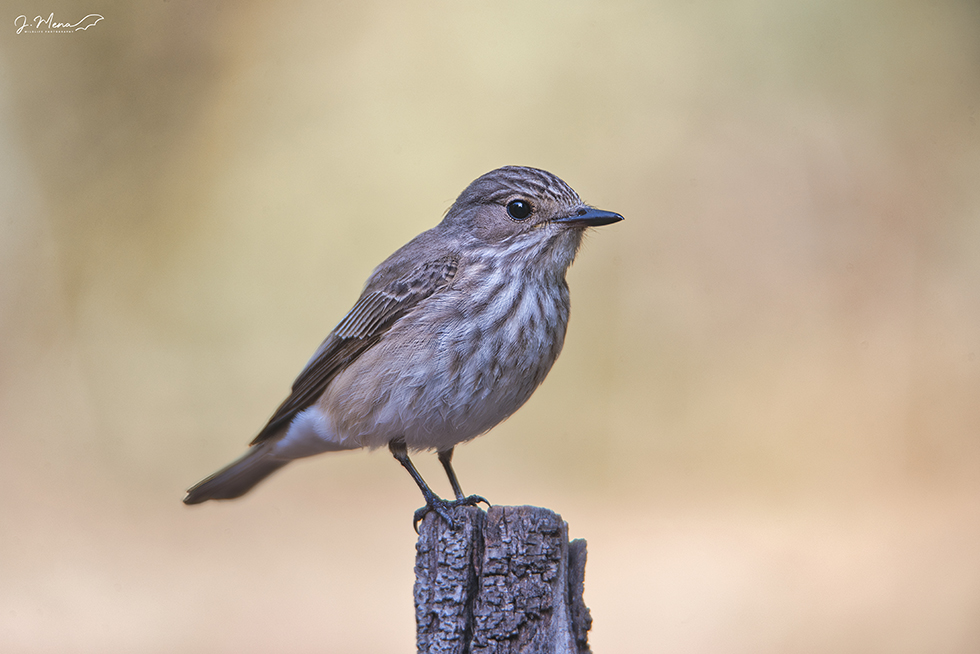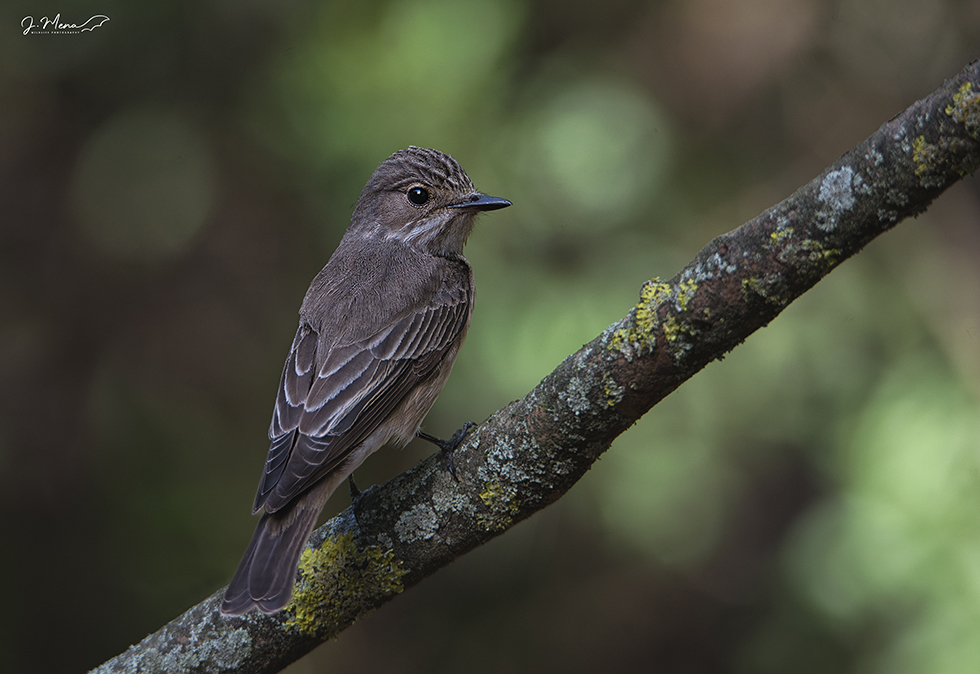Muscicapa striata

The Spotted flycatcher Muscicapa striata is a species of passerine bird in the family Muscicapidae. It is small in size, with a length of 13.5 to 15 cm.
The Spotted flycatcher looks for wooded areas where the trees are not very dense and with spaces between their branches. Also in urban areas, open fields, orchards, crops, gardens, etc. The habitat differs from one region to another in Europe.

The Spotted flycatcher feeds on flying insects, mainly diptera and hymenoptera but also lepidoptera, coleoptera, etc. It has a very particular hunting technique, catching insects on the fly from a branch that dominates its territory to which it will return after obtaining the prey, that is, making short flights. Insects are hunted in the immediate vicinity of trees, which explains the need to have leaf-free outer branches over their territory. It frequently hunts from a power line, rope, chain link fence, post or fence.

Nesting takes place from the end of May to the end of July, sometimes until August for the last clutches. The nest is made of dry stems and rootlets and is built in the cavities of trees or more rarely in a wall cavity, being located at a very variable height. The opening of the cavity must be quite wide, which explains why clutches are often destroyed by corvids or rodents. They frequently make two broods.
Most of the European population of this species is found in Sweden, Finland, Russia and Belarus. In Spain, it constitutes a nesting species that is present in all the peninsular autonomous communities, as well as in the Balearic Islands.

Trans-Saharan migratory. The feeding of the gray flycatcher makes it a necessarily migratory bird. They leave Europe from August to mid-October to settle during the winter in tropical Africa, both in savannahs and tropical forests. The spring return takes place at the beginning of May.
Playing his song:

